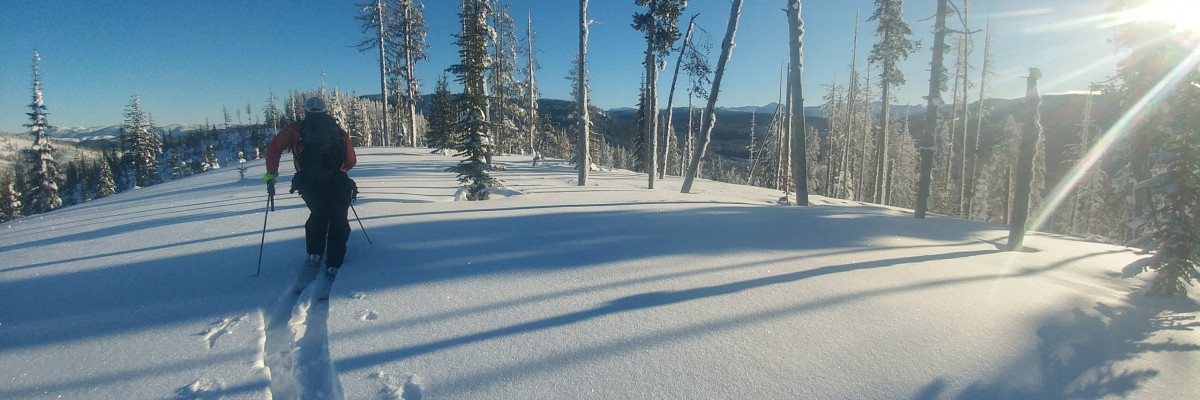The current avalanche danger is CONSIDERABLE on all slopes above 6000 feet in the West central Montana backcountry. Careful snowpack evaluation, cautious route-finding, and conservative decision-making are essential to recreate today. Natural avalanches are possible and human triggered avalanches are likely across the region. All slopes below 6000 feet are moderate today.
Good morning, this is Travis Craft with the West Central Montana Avalanche Center’s avalanche advisory for January 02, 2018. This danger rating does not apply to operating ski areas, expires at midnight tonight and is the sole responsibility of the U.S. Forest Service.
Weather and Snowpack
Mountain temperatures range from 4 F to 20 F in the region. In the Bitterroot winds are 8 mph with gusts of 11 out of the S. In the northern part of the advisory area, at Point Six, winds are reading 21 mph with gusts of 24 mph out of the WNW. The forecast area received 0 to 1 inch of new snow in the last 24 hours.
Matt and I toured near Lolo Pass yesterday. We found the snowpack below 6000 feet to be relatively stable. We have public observations(PB01, PB02) of the storm slab gaining strength. We got reports of natural activity on North aspects above 7000 feet in the southern Bitterroot on the Thanksgiving crust. We also found surface hoar growth; this will be a layer of concern when it gets buried with the next storm.
Wind slabs are the primary avalanche problem. These slabs are gaining strength but still will be likely triggered by a human. Leeward terrain will have large wind slabs. Look for rounded pillows of snow near ridgelines and recognize signs of instability such as cracking in the surface snow.
The second avalanche problem is persistent slabs. The facets on the Thanksgiving crust are reactive on slopes above 6000 feet. We got observations of this layer releasing naturally yesterday in the southern Bitterroot on a North facing aspect. Natural activity is a bullseye clue to instability. The other way to find this layer is to dig a pit in a safe spot out of runout zones and on low angle terrain.
Our next chance for snow will be in the middle of the week. With the forecast look for the avalanche danger to slowly decrease as the snowpack strengthens.
If you are out in the backcountry, please send us your observation, these are very helpful in producing the advisory.Logan will issue a weather update tomorrow January 03, 2018.
Ski and ride safe.
























